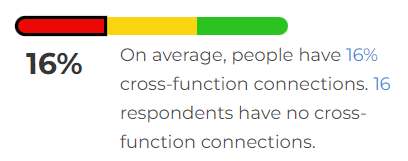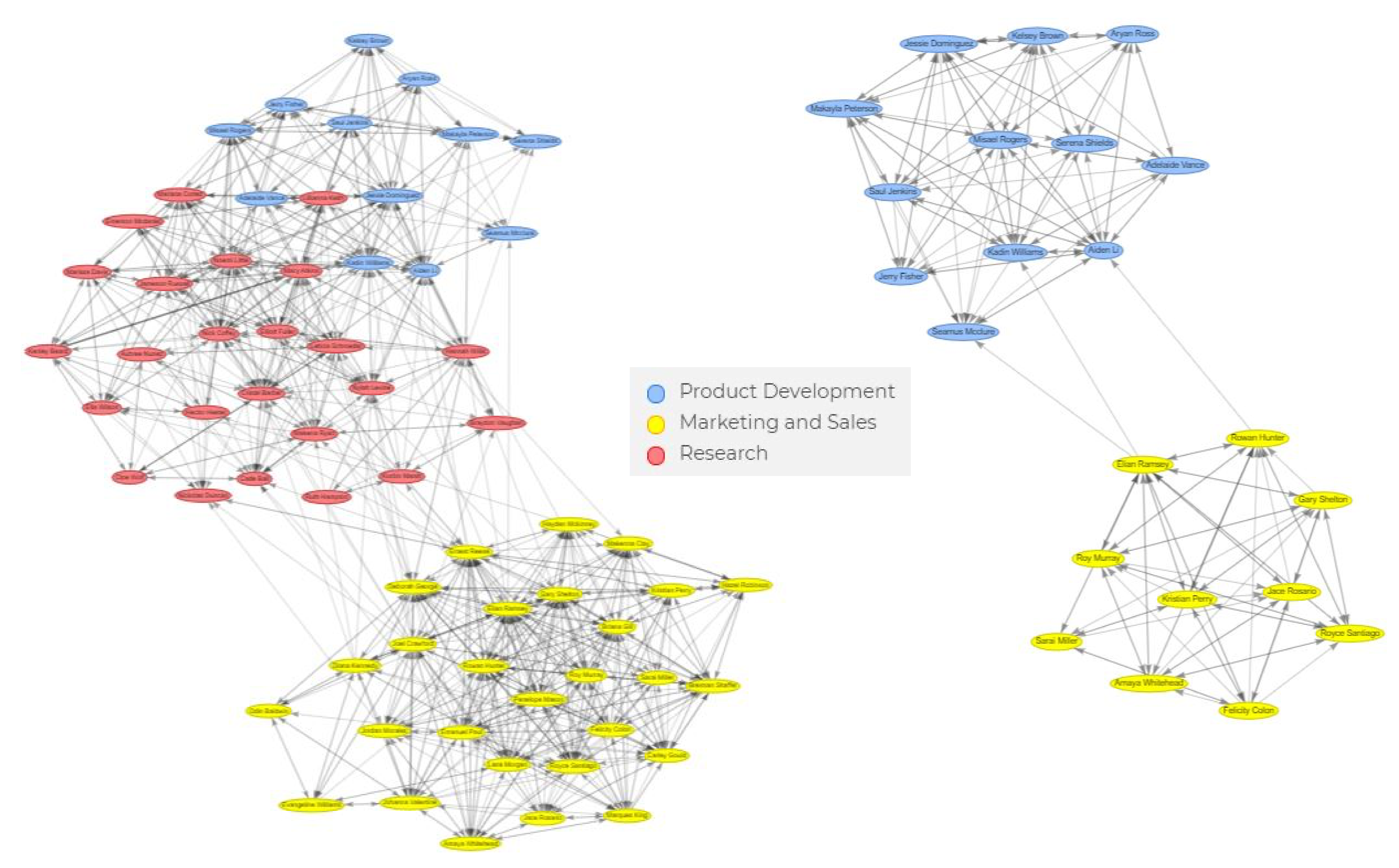Through this visualization, Anya could clearly see the silo that had developed between
Marketing and Sales, and Research and Product Development.
When narrowing in on two sub-teams in London and NYC that were supposed to be iterating
on
one aspect of the new product, the silo became more obvious.
Note: Each node represents a person and the lines represent relationships between
people.
Case Study Context
- This team of 64 had been hand-selected six months earlier to commercialize a game-changing technical breakthrough for the 7,000-person organization.
- Despite the people and resources devoted to this project, progress was far slower than expected, and the team had missed important deadlines.
- The original project manager abruptly resigned, and a new leader, Anya, accepted the position, with a mandate to make a quick transition and get the team back on track.
- Anya struggled to identify why the team was floundering, so she decided that an organizational network analysis (ONA) would clarify the best path forward.








